|
|
HEALTHY HAPPENING January 2020
|
What’s Holding You Back?
Clearing Karmic Barriers to Creativity
|
Are you plagued with obstacles to fulfilling your creative potential? Let’s look at these deep blocks together in a safe environment and end the frustration they cause. This seminar provides an opportunity to illuminate and dissolve barriers to full expression and understand their origins in birth and childhood, in the womb and even in past lifetimes – opening the way to free-flowing imagination and blossoming creativity. Witnessing and supporting each other’s clearing work, we come to understand how residual trauma encountered on the wheel of birth and death can obstruct fulfillment in our present lives.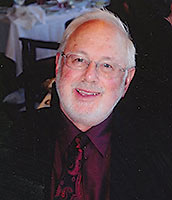
What's Getting in My Way?
Sometimes it's something simple, like my parents never appreciated my gift, or my friends teased me for being so sensitive, or a misguided art teacher told me I had no talent. Or it could be a deeper issue of self-image, like the doctor delivering me saying something like, “Look at this shriveled red runt, like a drowned rat.”
Even in the womb we can pick up negativity never intended for us. A depressed woman who lacks support can be thinking, “I hate this pregnancy. What am I going to do with another baby?” The fetus takes it personally and feels unwanted and unloved before even being born.
A persecution experience in a past lifetime can pattern through subtly into this life. I have met many potential healers who kept their talents hidden because long ago as village herbalists they were burned as witches.
Such traumatic memories can remain unconscious but continue to exert an inhibitory effect for life unless the block can be removed. Four decades ago I had the good luck to learn a therapy technique for reliving and releasing deeply buried trauma without hypnosis. Over the years I expanded this method beyond the therapy room for use in seminar and workshop groups to open up blocked areas in our lives.
Steve is a seasoned psychiatrist and psychotherapist with many years of experience helping people traverse the deep unconscious and heal buried trauma.
Clearing Karmic Barriers Seminars
January 15, 22, 29. February 12, 19, 26 7-9pm at Moab Arts & Recreation Center.
$25 per session or $120 for entire series.
Pre-registration required for all participants. Text Steve at 801-631-8426 to register.
Seminar size limited to twelve participants. Copies of Steve’s book, Karmic Therapy: Healing the Split Psyche will be provided at the first class.
|
How to Help Socially Isolated Seniors |
The elderly population is on the rise in many countries. Advancements in healthcare and a growing emphasis on healthy lifestyles means people are living longer than ever before.
Age is often accompanied by wisdom, but men and women may also find that feelings of isolation, loneliness and depression may also settle in as they grow older. The Journal of Primary Prevention published "A Review of Social Isolation," which observed how social isolation has been linked to numerous detrimental health effects in older adults. Some of these ailments may include increased risk for mortality, rehospitalization, falls, and dementia.
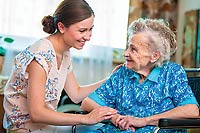 Individuals looking to give back to their communities may want to consider helping seniors in their area. Although it can be difficult to see seniors with diminished physical or mental capabilities, the rewards of interacting and helping seniors can be immeasurable. There are plenty of ways to help seniors avoid isolation and continue to live fulfilling lives. Individuals looking to give back to their communities may want to consider helping seniors in their area. Although it can be difficult to see seniors with diminished physical or mental capabilities, the rewards of interacting and helping seniors can be immeasurable. There are plenty of ways to help seniors avoid isolation and continue to live fulfilling lives.
Provide transportation. A Place for Mom, a senior housing placement resource, notes that lack of adequate transportation is a main cause of social isolation among seniors. Voluntary or necessary cessation of driving makes getting to and from appointments or even recreational outings more difficult. Where public transportation is unavailable or challenging to come by, volunteers can help shuttle seniors to and from grocery stores, doctor's offices and any other places they need to go. Getting out regularly and seeing new faces can help seniors overcome feelings of loneliness.
Participate in hobbies together. Give seniors a sense of purpose by encouraging them to participate in hobbies or activities. Book clubs are one activity that can interest people of different age groups.
Encourage exercise. Physical exercise keeps the body fit and improves mental health. Seniors can benefit from physical activity because it promotes strong bones and a healthy cardiovascular system. In addition, seniors who enroll in exercise classes at gyms or local senior centers can meet like-minded adults, helping them overcome their feelings of isolation even further.
Provide meals and companionship. Older adults may not be getting all they need to maintain healthy weights and bodily functions. Cooking and shopping for healthy foods may be difficult. Provide seniors with healthy meals when possible, and take the time to share those meals. This can foster conversations that keep seniors' minds sharp and also may help prevent social isolation.
Seniors can benefit from many different forms of support, and helping older adults is a worthy volunteer initiative.
|
| What’s Your New Year’s Resolution? |
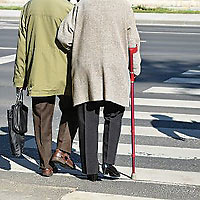 Improve mobility? Keep up with the grandkids? Did you know simple movement tests can predict your health status. The American Heart Association encourages people to "know their numbers" referring to our vital signs: blood pressure, blood cholesterol, blood glucose, heart rate, and weight. However, research is now showing that moving properly is also important for health. Improve mobility? Keep up with the grandkids? Did you know simple movement tests can predict your health status. The American Heart Association encourages people to "know their numbers" referring to our vital signs: blood pressure, blood cholesterol, blood glucose, heart rate, and weight. However, research is now showing that moving properly is also important for health.
In recent medical literature, walking speed has been called the "sixth vital sign." Like blood pressure or heart rate, it is quick and easy to measure. It also tells medical staff a lot about your health. Walking speed has been shown to be predictive of future hospitalizations, functional decline, and overall mortality. Normal walking speed is considered to be 1.2 to 1.4 meters per second—the time allowed to cross the street before cross walk counts down to ‘0’!
Another mobility test to get a picture of your health may include how many push ups you can do without stopping. Researchers found that men who could do 40 or more consecutive push ups were at a 96% lower risk for cardiovascular disease than were men who could do less than 10. The push up test was also more useful in predicting future cardiovascular disease than aerobic capacity measured on a treadmill. 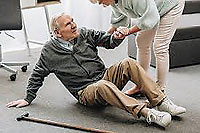
If you can't easily get down on the floor and back up your health might be in trouble, according to a study that looked at more than 2,000 people. They found that if you need to use more than one hand to get up and down from the floor, you were 2 to 5 times more likely to die in the next 7 years than someone who can do it with just one hand, or even better, no hands at all.
Moving well is obviously important to overall health and longer life. These tests can give a snapshot of how you're doing. If you're having trouble with any of them, consider seeing a movement specialist—your physical therapist. At Moab Physical Therapy and Rehabilitation, we can address your mobility limitations billable to your insurance.
Make 2020 a memorable year. Call us (435) 210-1985 or check out moabphysicaltherapy.com
Follow us on social media: @MoabPT
|
Why Are We So Sick?
by Dr. Ray Andrew |
Americans are increasingly taking for granted that chronic disease is just a part of life. Unless something changes fast, authorities estimate that half of all children born after the year 2032 will develop autism. One-third of children born after the year 2000 will develop diabetes at some point in life. Already, 75% of Americans over age 40 have at least one chronic disease. One American dies of cancer every minute. One in three seniors dies with Alzheimer’s or another dementia.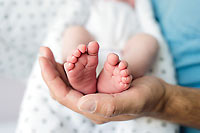
What do all of these conditions have in common? Toxicity. And for every one of us who develops a disease from it, many more experience annoying if not debilitating symptoms. This includes such diverse and nonspecific problems as fatigue, dizziness, inability to lose weight, brain fog, depression, trouble sleeping, aches and pains, inability to handle stress, unexplained hormone disturbances, anxiety, irritability, ringing in the ears, bad breath or body odor, digestive problems, and so much more.
We try to take care of ourselves, but toxins find their way into all of our lives. The Environmental Working Group has found that babies today have an average of 200 toxins in their blood at birth. Add to that the polluted air we breathe, pesticides on our food and in the water supply, and heavy metals that surround us, mostly unrecognized. Then we have household cleaners, personal care products (most lipstick is laced with lead, for example), food dyes, preservatives, additives, “natural flavors”, BPA (in plastics and many other sources), medications (many are made with aluminum, mercury, formaldehyde, dyes, and other toxins), cigarettes, alcohol, flame retardants (on furniture and carpet), sunscreens, etc.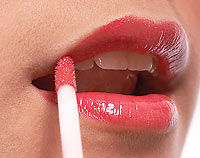
Some experts estimate there are currently 88,000 manmade chemicals in existence today. Aside from those regulated as “food” or drugs, there is no requirement that these chemicals undergo studies proving their safety to humans, animals, or plants.
Don’t forget about electrosmog from our cell phones, wireless routers, blue tooth, cell towers, radio waves, and wires in our homes and other buildings. Or radiation from x-rays used in medical diagnosis and treatment. We cannot see or feel harmful electromagnetic radiation, but the damage it causes to our DNA and mitochondria is undeniable.
Needless to say, the conveniences, productivity, prosperity, and opportunities created by modern technology all come with a price. It’s a wonder anyone is even remotely healthy anymore!
Engulfed in toxins of all kinds, it would be easy to throw one’s hands in the air and give up trying to be healthy. Especially considering those pollutants over which we have no personal control. But ANY effort to reduce one’s exposures pays dividends.
You can make a good start by becoming aware of the toxins over which you DO have some control. Take a look at the ingredients in your makeup, lotions, lip balm, and other such products. Do you see the word “paraben” anywhere? That’s a specific type of hormone disruptor called a “xenoestrogen”. There are many xenoestrogens in our environment and in products we use every day. Increased risk of cancer is only one of many consequences of xenoestrogens.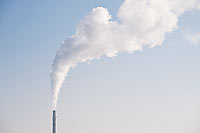
The nonprofit Environmental Working Group has compiled a wealth of information (go to www.ewg.org) to help Americans learn what toxins are in our water, produce, cosmetics, cleaning agents, food additives, sunscreens, and other sources. Just as important, it identifies healthier alternatives to help you reduce your everyday exposures. Download the Healthy Living app to see how easy it is. You can even scan bar codes on your favorite products to instantly find out how each of their ingredients stacks up.
In order to not overwhelm yourself, you could substitute a healthier alternative for each toxic household or personal care item as it runs out rather than trying to replace them all at once. This effort will reduce your ongoing exposure and therefore risk of disease down the road.
But what about all the toxins that have already found “homes” in cells throughout your body? The body was marvelously designed to remove a host of chemicals. But the overwhelming majority of chemicals in existence today did not exist even 50 years ago. Believe it or not, some of the toxins in your brain, liver, kidneys, fat, and other organs have been there since before you were born, due to exposures your mother had during pregnancy.
As helpful as they can be, saunas, ionic foot baths, liver cleanses, gallbladder cleanses, and colon cleanses will not remove from your cell membranes these fat-soluble toxins that continue to hamper your health. Fortunately, at Prestige Wellness Institute, we have a program for cellular detoxification. If you are tired of symptoms unexplained by lab tests, call (435)259-4008 to make an appointment in Moab or Utah County. Why not start 2020 off with a little “house cleaning”? You might just find that it helps you with some of those health-focused New Year’s resolutions.
|
| Financial Aid at Moab Regional Hospital |
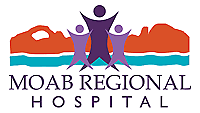 Medical bills can seem intimidating and overwhelming, even if you have health insurance. Moab Regional Hospital is a not-for-profit, 501(c)3 hospital and is committed to helping you afford the health care you deserve. We have a generous financial aid program that you could be eligible for! Medical bills can seem intimidating and overwhelming, even if you have health insurance. Moab Regional Hospital is a not-for-profit, 501(c)3 hospital and is committed to helping you afford the health care you deserve. We have a generous financial aid program that you could be eligible for!
The Statistics
Information was recently gathered from a survey and focus groups of randomly selected residents of Moab and surrounding areas. Those who responded to our survey and participated in our focus groups listed the “ability to pay the high cost of health care” as one of their top concerns from a list of community health concerns. Then when they were asked about our financial aid program, a total of 67% of  respondents said that they didn’t apply for financial assistance because they either didn’t think they would qualify or they weren’t aware of the program. We are dedicated to helping our community afford their health care. Our financial assistance program is set up so that we can assist as many patients as possible, with generous amounts paid out to aid in this goal. Before assuming you may not qualify, get in touch with one of our Financial Navigators who can give you a better idea of what you may qualify for at 435-719-3540. respondents said that they didn’t apply for financial assistance because they either didn’t think they would qualify or they weren’t aware of the program. We are dedicated to helping our community afford their health care. Our financial assistance program is set up so that we can assist as many patients as possible, with generous amounts paid out to aid in this goal. Before assuming you may not qualify, get in touch with one of our Financial Navigators who can give you a better idea of what you may qualify for at 435-719-3540.
How Is Financial Aid Determined?
Our financial aid program is determined on a sliding scale based on income and family size. For example, if you have a family of four, and you make $44,000 a year, Moab Regional Hospital 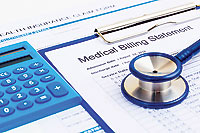 would cover 50% of your hospital bill. Keep in mind that our financial assistance program is available to everyone, those with health insurance and without. We understand that meeting your deductible and out-of-pocket costs can be overwhelming, we’re here to help. The deadline to apply for financial assistance through our program is 120 days after the date of your first billing statement. These applications are reviewed by a committee and are usually decided within 30 days. would cover 50% of your hospital bill. Keep in mind that our financial assistance program is available to everyone, those with health insurance and without. We understand that meeting your deductible and out-of-pocket costs can be overwhelming, we’re here to help. The deadline to apply for financial assistance through our program is 120 days after the date of your first billing statement. These applications are reviewed by a committee and are usually decided within 30 days.
A Healthier Community
We are focused on promoting the health of our community. Our dedicated team is patient-centered in all aspects, including aiding those in need of financial assistance. There is financial help available to those who need it. The documents you need to apply for financial assistance at Moab Regional Hospital can be found at www.mrhmoab.org/billing-and-financial-assistance/. If you have any questions, please get in touch with a Financial Navigator at 435-719-3540. |
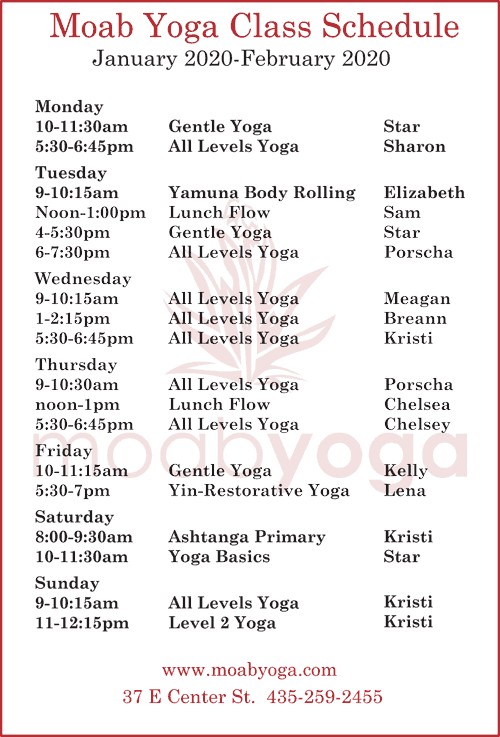 |
|
|
|
|
|
|
|
© 2002-2024 Moab Happenings. All rights
reserved.
Reproduction of information contained in this site is
expressly prohibited.
|
|